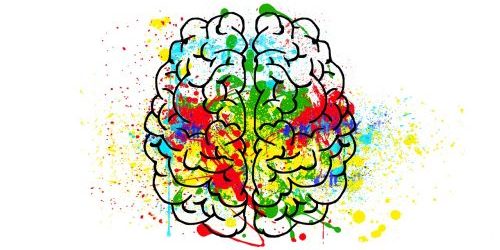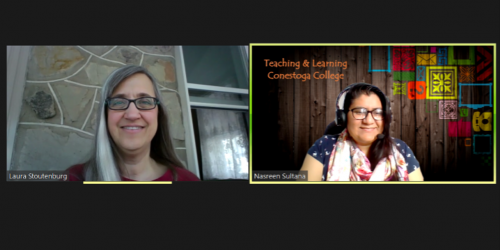Controlled, Semi-Controlled, and Free Practice
This post describes how controlled, semi-controlled, and free practice activities can support and develop student knowledge, skills, and confidence throughout your classroom lesson.
Why Different Types of Practice?
Hands-on practice in learning engages students actively, making the learning process more interesting and interactive (Vygotsky, 1978). Practice encourages the development of critical thinking and problem-solving skills, equipping students with knowledge and skills to tackle real-world challenges.
The Gradual Release of Responsibility (GRR) Model is an educational framework that describes learning as a gradual process in which the responsibility of learning shifts from the teacher to the student over a learning program. Originating from the social constructivist theory, it emphasizes the importance of active engagement and collaboration in learning (Fisher & Frey, 2014).
According to the GRR Model, learners are best positioned to learn by engaging in activities with progressively less structure and control. One way to describe this progression can be described as controlled, semi-controlled, and free practice. These activities are derived from English language learning (Butchak, 2024) but can be applied to other fields of learning.
Feedback is also important in each practice activity to correct misunderstandings and minimize confusion (Sophy, 2021).
Controlled Practice
Controlled practice activities allow learners to practice with new ideas, concepts, processes, or tasks. Controlled activities provide the highest level of structure and control. They are designed to reinforce specific points and often require correct answers. The main focus of controlled practice is accuracy in consolidating understanding and memory (Butchak, 2024). They often involve lower-order thinking skills. Here are five examples of learning activities that you can create for this stage:
- Multiple-choice quizzes
- Flashcards review
- Fill-in-the-blank exercises
- Matching exercises
- Supported drawing
A controlled activity may be done directly after a short lesson, demonstration, or modelling that you provide. Corrective feedback should be provided before proceeding to the next part of the lesson, demonstration, or practice activity.
Semi-Controlled Practice
Semi-controlled practice activities provide somewhat less structure and control. They involve applying or analyzing information to build on knowledge just learned, but still with some limited direction, supervision, oversight, and structured support. These activities strengthen a student’s combined knowledge of multiple or successive points. They prepare the learner for the meaningful application of knowledge or skills in more complex ways than in controlled practice activities. They often involve both lower and higher order thinking skills. Here are five activity examples you may design for this stage:
- Group discussions
- Complex problem-solving
- Case study analysis
- Role-play scenarios
- Prediction exercises
A semi-controlled activity may be done following further explanation or demonstration to build on knowledge and skills acquired during the controlled practice stage. Feedback can assist learners in preparing for the subsequent lesson section or free practice activity.
Free Practice
Free practice activities provide the least structure and control. Free practice targets the application of knowledge in meaningful contexts, emphasizing building competence and confidence rather than perfect accuracy (Butchack, 2024). They can include experimenting with variety, creativity, collaboration or contexts. These activities release the learning responsibility to learners, emphasizing greater interactivity, authenticity, and personalization. They often involve higher-order thinking skills. Examples can include:
- Poster design
- Presentation
- Debate
- Creative writing tasks
- Developing a product or solution
A free practice activity may be done after feedback from the semi-controlled practice before or as a formative learning post-assessment.
Practice in Progression
According to the GRR model, progression is the key to learning through practice. Because each practice stage serves a specific purpose of knowledge or skill development, skipping a step from controlled to semi-controlled to free practice can lead to confusion or misunderstanding by students. This progressive form of active learning also builds confidence, and skipped steps can lead to students feeling unprepared or confident for the next stage.
See Table 1 for examples of how controlled, semi-controlled, and free practice activities scaffold learning in a way that gradually releases the responsibility of learning to students:
| Course Topic | Controlled Practice (teacher-centred practice) | Semi-Controlled Practice | Free Practice (student-centred practice) |
|---|---|---|---|
| Pastry Arts | Following a recipe | Modifying a recipe | Creating a new recipe |
| Journalism | Listing interview techniques | Selecting the appropriate technique for different circumstances | Conducting a simulated interview with a peer |
| Motive Power Technician (Truck and Coach) | Labeling parts of a truck engine | Assembling a truck engine under supervision | Independently diagnosing and fixing a truck engine problem |
| Professional Support Worker | Identifying patient care standards | Role-playing patient care scenarios | Providing patient care in a real-world setting |
| Project Management | Recognizing different project management tools | Applying tools to a hypothetical project | Managing a real project |
Final Thoughts
Structuring a lesson plan to include all three forms of practice in your lesson plan supports learning. It allows students to gradually take ownership of their learning, moving from knowledge acquisition to application and creation. Learn more about lower-order and higher-order thinking skills by visiting the post, Make your Lessons “Bloom!”: Leveraging Bloom’s Taxonomy for Lesson Planning Alignment.
References
Butchak, A. (2024). Controlled vs. Freer Practice Activities: The Power of Freer Practice in Grammar Instruction. Grade Education Centre – Grade University.
Fisher, D., & Frey, N. (2014). Better learning through structured teaching: A framework for the gradual release of responsibility. ASCD.
Sophy, S. (2021, June 14). Top Tips for your ESA Activate Phase. International TEFL and TESOL Training1
Vygotsky, L. S. (1978). Mind in society: The development of higher psychological processes. Harvard University Press.



